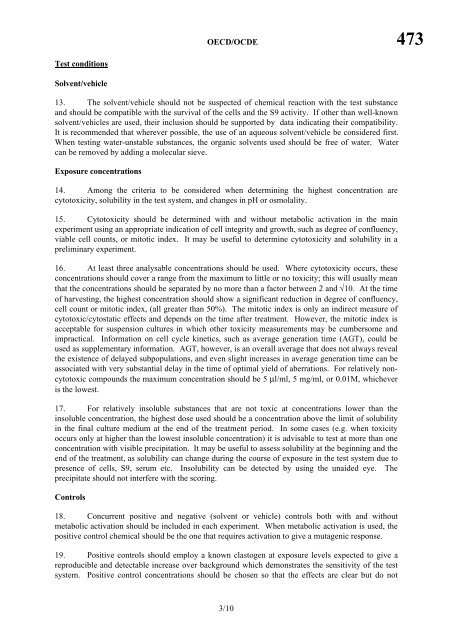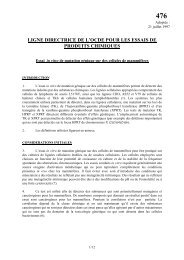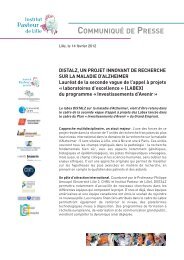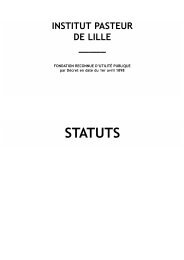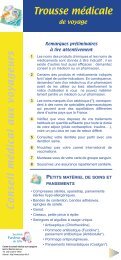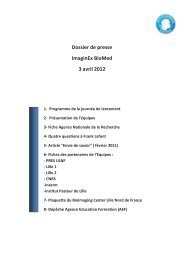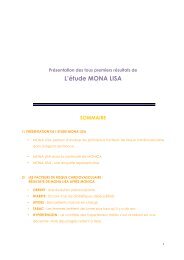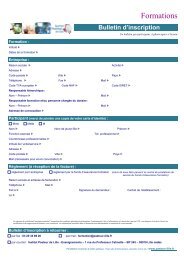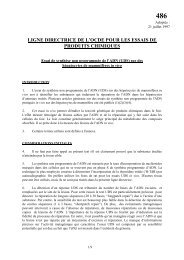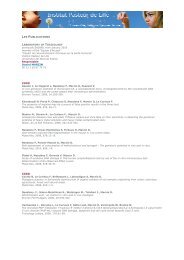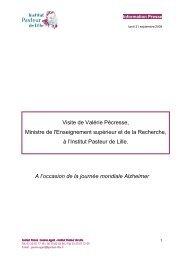OECD GUIDELINE FOR THE TESTING OF CHEMICALS
OECD GUIDELINE FOR THE TESTING OF CHEMICALS
OECD GUIDELINE FOR THE TESTING OF CHEMICALS
Create successful ePaper yourself
Turn your PDF publications into a flip-book with our unique Google optimized e-Paper software.
<strong>OECD</strong>/OCDE 473Test conditionsSolvent/vehicle13. The solvent/vehicle should not be suspected of chemical reaction with the test substanceand should be compatible with the survival of the cells and the S9 activity. If other than well-knownsolvent/vehicles are used, their inclusion should be supported by data indicating their compatibility.It is recommended that wherever possible, the use of an aqueous solvent/vehicle be considered first.When testing water-unstable substances, the organic solvents used should be free of water. Watercan be removed by adding a molecular sieve.Exposure concentrations14. Among the criteria to be considered when determining the highest concentration arecytotoxicity, solubility in the test system, and changes in pH or osmolality.15. Cytotoxicity should be determined with and without metabolic activation in the mainexperiment using an appropriate indication of cell integrity and growth, such as degree of confluency,viable cell counts, or mitotic index. It may be useful to determine cytotoxicity and solubility in apreliminary experiment.16. At least three analysable concentrations should be used. Where cytotoxicity occurs, theseconcentrations should cover a range from the maximum to little or no toxicity; this will usually meanthat the concentrations should be separated by no more than a factor between 2 and √10. At the timeof harvesting, the highest concentration should show a significant reduction in degree of confluency,cell count or mitotic index, (all greater than 50%). The mitotic index is only an indirect measure ofcytotoxic/cytostatic effects and depends on the time after treatment. However, the mitotic index isacceptable for suspension cultures in which other toxicity measurements may be cumbersome andimpractical. Information on cell cycle kinetics, such as average generation time (AGT), could beused as supplementary information. AGT, however, is an overall average that does not always revealthe existence of delayed subpopulations, and even slight increases in average generation time can beassociated with very substantial delay in the time of optimal yield of aberrations. For relatively noncytotoxiccompounds the maximum concentration should be 5 µl/ml, 5 mg/ml, or 0.01M, whicheveris the lowest.17. For relatively insoluble substances that are not toxic at concentrations lower than theinsoluble concentration, the highest dose used should be a concentration above the limit of solubilityin the final culture medium at the end of the treatment period. In some cases (e.g. when toxicityoccurs only at higher than the lowest insoluble concentration) it is advisable to test at more than oneconcentration with visible precipitation. It may be useful to assess solubility at the beginning and theend of the treatment, as solubility can change during the course of exposure in the test system due topresence of cells, S9, serum etc. Insolubility can be detected by using the unaided eye. Theprecipitate should not interfere with the scoring.Controls18. Concurrent positive and negative (solvent or vehicle) controls both with and withoutmetabolic activation should be included in each experiment. When metabolic activation is used, thepositive control chemical should be the one that requires activation to give a mutagenic response.19. Positive controls should employ a known clastogen at exposure levels expected to give areproducible and detectable increase over background which demonstrates the sensitivity of the testsystem. Positive control concentrations should be chosen so that the effects are clear but do not3/10


